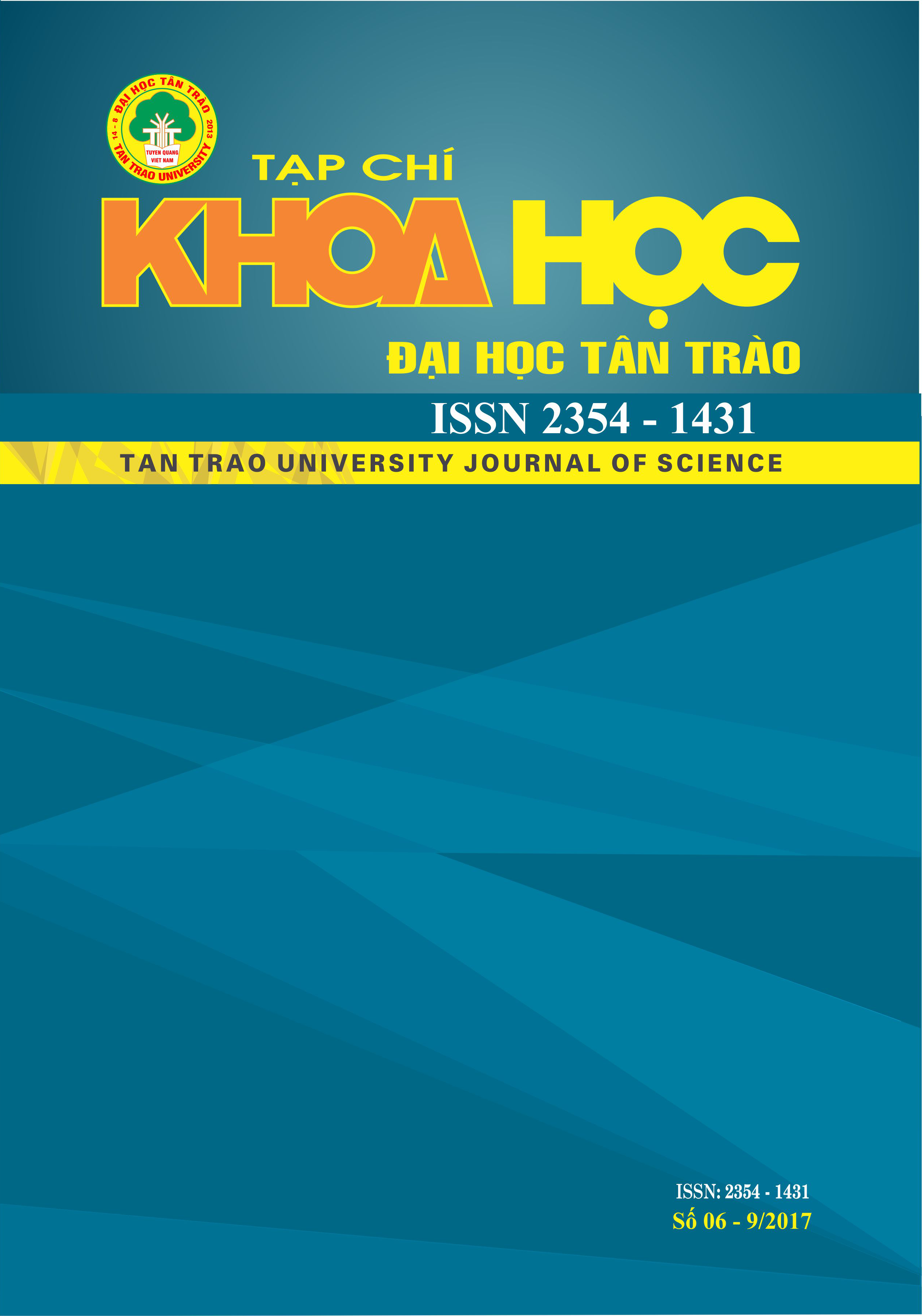Nghiên cứu sự thay đổi hình thái tuổi dậy thì làm cơ sở xây dựng các hình thức giáo dục giới tính phù hợp cho học sinh trung học cơ sở Hà Nội 1
DOI:
https://doi.org/10.51453/2354-1431/2017/155Từ khóa:
Signs of puberty; Pupils; Sex education.Tóm tắt
Research on 1926 pupils (942 schoolboys and 984 schoolgirls) at the average age of 12 -15, they are from 3 Secondary schools of 3 districs in Hanoi. The results had shown that, the order of appearance of secondary sexual characteristics of secondary pupils follow the rules of growth and normal development of age. However, the time appear the secondary sexual characteristics of secondary school students in Hanoi earlier the same age in some other localities. There are differences in age and percentage of pupils appearing for the secondary sexual signs in boys and girls, in which these signs of girls appear earlier than boys.
Tải xuống
Tài liệu tham khảo
1. Bộ Y tế (2003), Các giá trị sinh học người Việt Nam bình thường thập kỷ 90 – thế kỷ 20, Nxb Y học;
2. Đỗ Hồng Cường (2009), Nghiên cứu một số chỉ số sinh học của học sinh trung học cơ sở các dân tộc tại Hòa Bình, Luận án Tiến sĩ Sinh học, Trường Đại học Sư phạm Hà Nội;
3. Trần Long Giang, Mai Văn Hưng (2012), “Đặc điểm các dấu hiệu dậy thì của học sinh theo vùng sinh thái”, Tạp chí khoa học Đại học Quốc gia Hà Nội, Tập 28, Số 1S, 2012;
4. Đào Huy Khuê (1991), Đặc điểm về kích thước hình thái, về sự tăng trưởng và phát triển cơ thể của học sinh phổ thông 6 -17 tuổi thị xã Hà Đông, tỉnh Hà Sơn Bình, Luận án PTS Sinh học, Trường Đại học Tổng hợp Hà Nội;
5. Cao Quốc Việt (1997), Tuổi dậy thì của trẻ em ở một số vùng sinh thái và một số yếu tố ảnh hưởng, Bàn về đặc điểm tăng trưởng người Việt Nam, Chương trình khoa học cấp nhà nước, Đề tài KX 07-07.
Tải xuống
Đã Xuất bản
Cách trích dẫn
Số
Chuyên mục
Giấy phép

Tác phẩm này được cấp phép theo Giấy phép Quốc tế Creative Commons Attribution-ShareAlike 4.0 .
Bài báo được xuất bản ở Tạp chí Khoa học Đại học Tân Trào được cấp phép theo giấy phép Ghi công - Chia sẻ tương tự 4.0 Quốc tế (CC BY-SA). Theo đó, các tác giả khác có thể sao chép, chuyển đổi hay phân phối lại các bài báo này với mục đích hợp pháp trên mọi phương tiện, với điều kiện họ trích dẫn tác giả, Tạp chí Khoa học Đại học Tân Trào và đường link đến bản quyền; nêu rõ các thay đổi đã thực hiện và các nghiên cứu đăng lại được tiến hành theo cùng một bản quyền.
Bản quyền bài báo thuộc về các tác giả, không hạn chế số lượng. Tạp chí Khoa học Tân Trào được cấp giấy phép không độc quyền để xuất bản bài báo với tư cách nhà xuất bản nguồn, kèm theo quyền thương mại để in các bài báo cung cấp cho các thư viện và cá nhân.
Mặc dù các điều khoản của giấy phép CC BY-SA không dành cho các tác giả (với tư cách là người giữ bản quyền của bài báo, họ không bị hạn chế về quyền hạn), khi gửi bài tới Tạp chí Khoa học Đại học Tân Trào, tác giả cần đáp ứng quyền của độc giả, và cần cấp quyền cho bên thứ 3 sử dụng bài báo của họ trong phạm vi của giấy phép.






